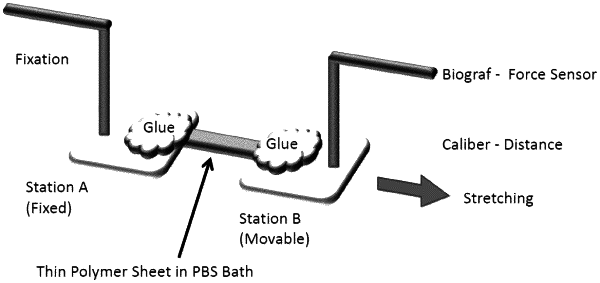| CPC G01N 33/5082 (2013.01) [C12M 21/08 (2013.01); C12M 23/12 (2013.01); C12M 23/16 (2013.01); C12M 25/14 (2013.01); C12M 35/02 (2013.01); C12M 41/46 (2013.01); G01N 33/502 (2013.01); G01N 33/5061 (2013.01)] | 20 Claims |

|
1. A disease model comprising:
(i) a bioreactor, wherein the bioreactor comprises:
a device having a well configured for growing a diseased tissue from cells seeded therein, wherein the well has a bottom; and
at least two deformable elements disposed across the well such that there is a gap between the deformable elements and the bottom of the well, wherein the deformable elements are configured to: (a) permit attachment of the diseased tissue formed therebetween, thereby suspending the diseased tissue above the bottom of the well, and (b) deform in response to the contractile force exerted on the deformable elements by the disease tissue, thereby simulating a physiological environment that is native to the diseased tissue and/or permitting measurement of the contractile force; and
(ii) the diseased tissue grown in the bioreactor.
|